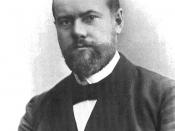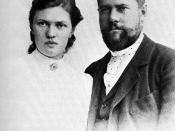Modernization EverywhereChange occurs everywhere and within every society and time period. Modernization is just one piece of the total tally of social change that has happened and is currently occurring. Modernization refers to the changes of social patterns since the time of the Industrial Revolution (Macionis, 2006). Several sociologists have tried to explain modernization and each have their own theories. Such sociologists are Ferdinand Tönnies, Emile Durkheim, Max Weber, Peter Berger, and Karl Marx. This paper will explain if modernization is likely to continue in the US, is modernization a world-wide trend, the consequences of modernization, and the theories that best reflect the author of the paper's perception of modernization.
To gain a better understanding of modernization it can be helpful to note Peter Berger's explanation of the four major characteristics of modernization. These include the decline of small, traditional communities, the expansion of personal choice, increasing social diversity, and orientation toward the future and a growing awareness of time (Macionis, 2006).
The first characteristic Berger states could easily be overlooked by people that do not know the history of America and the growth and declining of various cities. The first characteristic would have to be looked on for a period of time to prove the substance of the statement. The second statement Berger makes about the expansion of personal choice is easily seen in most developed and developing nations. People now in modern societies according to Berger have access to different lifestyles, goods, beliefs, etc. that are not available to cultures that are indigenous in nature and do not have the luxuries of internet, computers, libraries, etc. The third characteristic Berger points out is social diversity and this can be seen easily in America where there is a melting pot of culture and the amount of...


